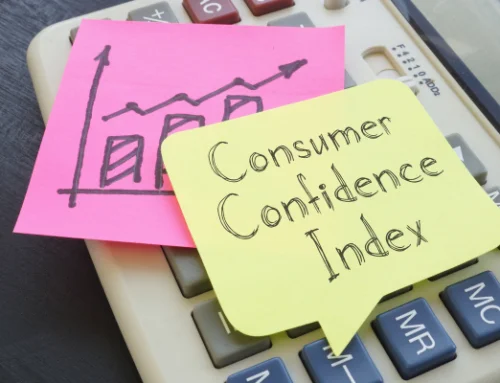Given that
- you can’t time the market,
- there’s no stock that will continue to go up (i.e. stock picking doesn’t work),
- bond values fall when interest rates rise, and
- the stock market is volatile and many indicators point to an upcoming bear market
what can retirees do?
Well, you can do what many high-net worth people do: use trend-following computer algorithms for your money invested in the market.
Never heard of it? You’re not alone. Trend-following algorithms used to be available only to investors with significant assets.
But first, some background. If you’re new to investing, all the terminology and jargon can sound like gobbledy-gook. Here are some simple definitions and explanations to lay out a few investing precepts. If you already know all this, skip to the end for the explanation of trend-following algorithms.
The Risk/Reward Payoff Curve
When it comes to investing, the most common principle is that the greater the risk, the greater the reward.
Standard Deviation
You can assess and measure risk by looking at volatility. In economics and statistics, volatility is measured by looking at something called standard deviation, or how much an investment’s value deviates from its average price over a period of time.
For example, if you invest in ABC Company and they have a standard deviation of 10%, that means in any given year, your stock is likely to go either up or down by about 10% from its average price. Standard deviation is one way you can measure the risk for a specific security, stock, or individual investment.
Keep in mind, even if you have a stock that has historically only been going up, its standard deviation is still based on how much it’s gone up. For instance, Facebook stock had been going up ever since it went public by 20-30% every year, but then it had a huge drop. If a stock can go up significantly in a short amount of time, it can also go down significantly in a short amount of time.
Beta
Beta is another risk measurement term. To determine beta, you take the standard deviation of an individual stock or investment and divide that by the standard deviation or volatility of the stock market itself, like the S&P 500, for example.
If that number equals one or less, that investment is less volatile than the stock market itself. If the number is one or more, that’s an indicator that what you’re investing in is more volatile than the stock market, which means you have the potential of making a lot of money really fast—along with the potential of losing a lot of money really fast.
High Beta Roller Coaster Fund
The same statistical risk-measuring methods also apply to mutual funds or indexes.
A roller coaster fund is a mutual fund that has a high beta, which means it’s more volatile than the stock market itself. It has the potential to beat the stock market in bull market years, but it also has the tendency to crash and burn badly in the down years.
Smart Beta
A new fad that’s picking up a lot of steam lately is called smart beta, which has actually been around since about 2003. The overall goal of smart beta is to take an index and try to decrease the beta, or reduce the amount of risk exposure that you have, while simultaneously trying to increase your gains while seeking what’s called alpha, meaning the percentage by which you can outperform the stock market.
With smart beta indexes, even though you may not have the highest returns in the up years, you are minimizing your losses in the down years.
Smart beta takes a portfolio, categorizes the different asset classes, and periodically adjusts the weighting and balancing of these asset classes in the portfolio based on rule-based strategies or rule-based investing. The investment mix is constantly changing in order to try to reduce as much of the volatility as possible using factors like beta, momentum, quality, and value.
But, remember, this type of investing, while a step in the right direction for the retiree, is not principal-guaranteed. It can lose money, and some smart beta index results have looked very good in theory using back-testing but have fallen flat and lost money when launched in the real world.
Downside Protection
When assessing risk, especially in retirement, you should ideally seek both low risk as well as something called downside protection, which preserves your principal (the initial amount of money you have invested) during bear market downturns.
Timing The Market
Timing the market cannot be done, period. Markets go up, and markets go down. It’s inevitable. The different booms and busts of the stock market cycles are inextricably linked to the different peaks and troughs of the business cycle and of the overall economy itself.
You may read a lot of convincing hype on the internet and in financial newsletters, but at the end of the day, you will eventually experience losses if you’re invested in the stock market. If you’re working in your 20’s and 30’s, that might be okay; however, when you’re retired, those losses can be life-changing and devastating.
According to the Stock Trader’s Almanac, the last six times that rallies like we’re experiencing right now happened were followed by three flat markets in 1994, 2004, and 2015, as well as two bear markets in 2000 and 2008. Today, according to the American Association of Individual Investors most recent survey, roughly 49% of investors believe stocks will be lower in six months’ time, which is up 18% from the previous week and the highest since April of 2013.
People are getting nervous and for good reason.
Bonds As “Safe”
Regarding bonds, when interest rates go up, bonds and bond funds go down in value. Bond funds should not be considered “safe” for retirement by any stretch of the imagination, no matter what stockbrokers may say about them. Historic results, available via Morningstar, tell the real story.
Trend-Following Algorithms
Okay, back to trend-following algorithms. For the last 20+ years, they’ve only been open to investors with millions in assets, but because of advances in computer technology, they’ve been available in recent years to retirees with lower minimums.
Note: You may not have heard of them because they are only offered by fee-based, fiduciary financial advisors, who don’t make commissions on stock market trades.
In the industry, these are sometimes called “absolute return models.” They can be thought of as “two-sided” because they are computer-driven, quantitative models designed to keep pace when the markets are going up but, more importantly, also offer some downside protection when the markets are going down.
Trend-following algorithms can outperform smart beta, buy-and-hold, dividend investing, and all the different other methodologies retirees are using to invest in the market. But, most importantly, they can help retirees preserve their nest egg.
At any given point, a portfolio managed by a trend-following algorithm won’t even be 100% invested in the market. The algorithms use precise indicators that trigger when to buy and when to sell positions. As an example, in late 2018 when the markets were falling by 14%, some of them were selling positions and going into cash while others were holding onto positions short. Instead of losing 14%, these models were only down by 2% or so.
This is incredibly important to retirees without a time horizon to wait through bear markets. If you take a 40% hit to your portfolio, according to data on Morningstar, it will take you roughly six years to break even. Put another way, if you’re down by 40%, you need to be up by 80% just to break even or to regain your losses.
Think about it: it makes more sense to strategically get in the market when there’s an uptrend, capture your gains, and get out before the markets turn over. With multiple bubbles approaching markets right now, including the real estate bubble, overpriced markets, G7 nation debt, business debt, individual debt, and more, these algorithms make the most sense.
Conclusion
So, now you know. Get in contact with an independent, fiduciary financial advisor, and learn more about your retirement options. Don’t keep holding and hoping.


